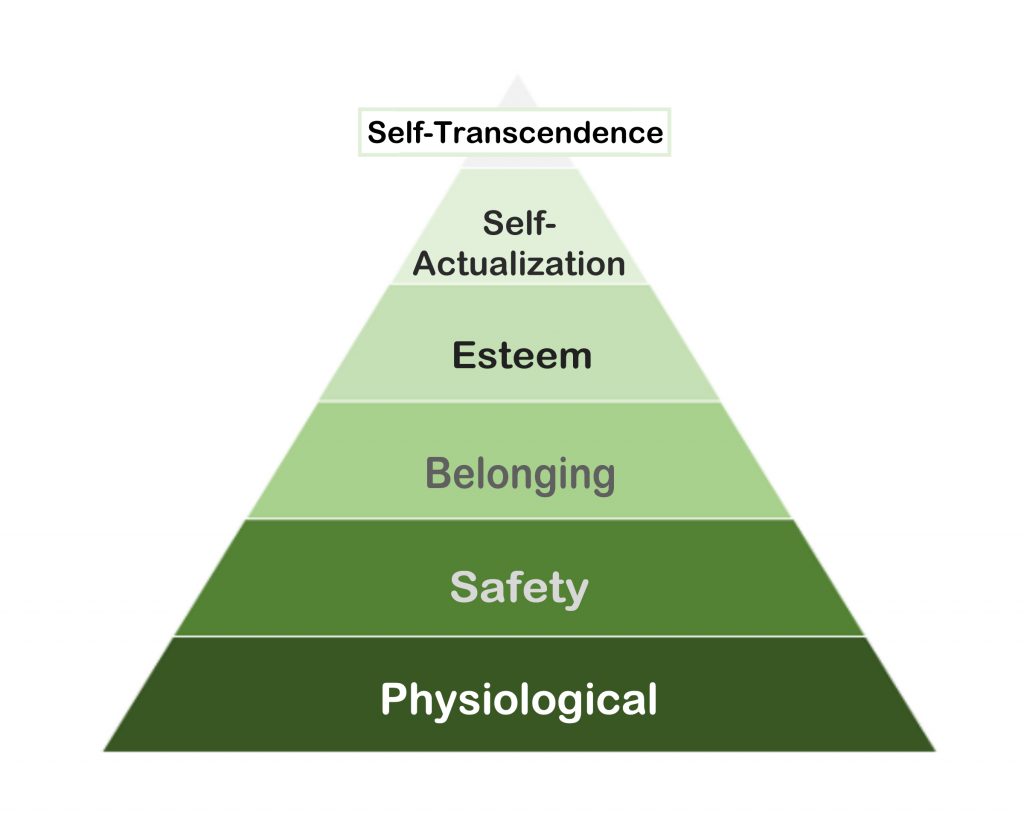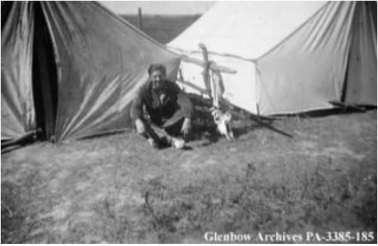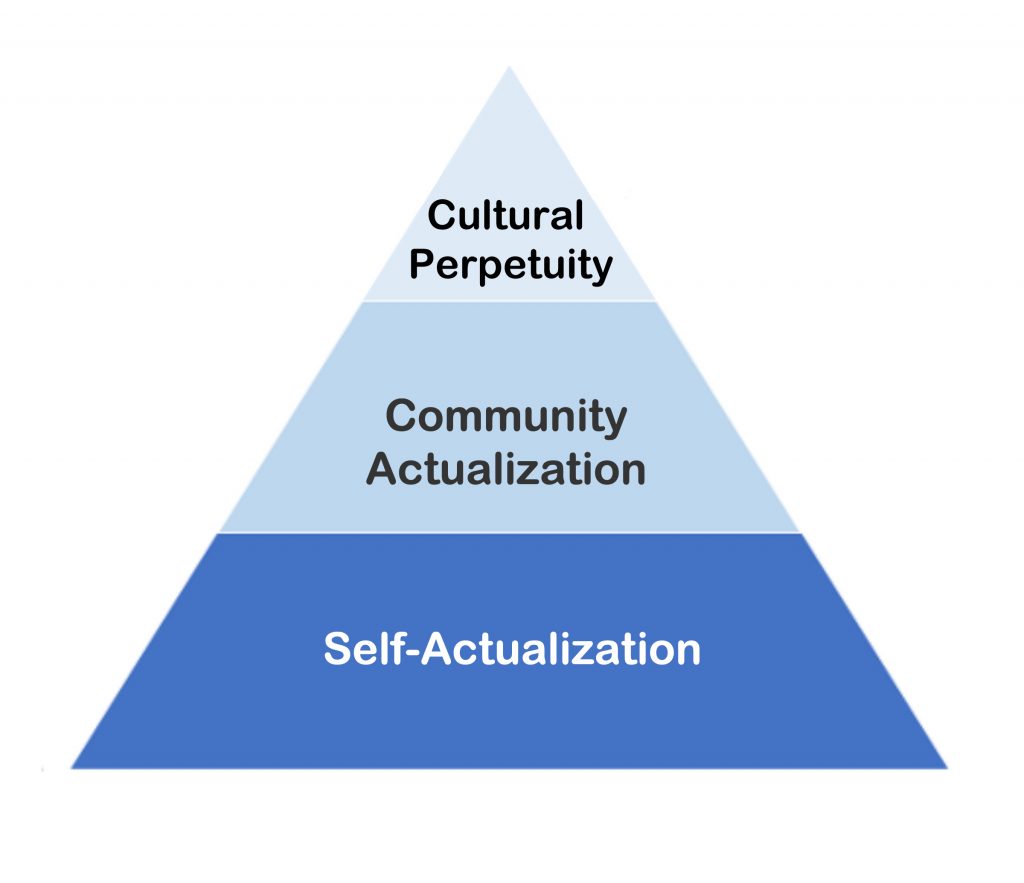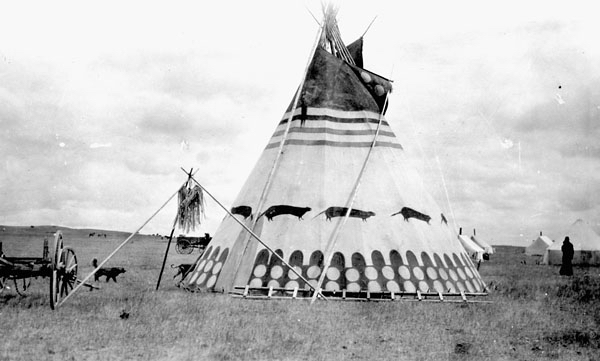79 Motivation
Learning Objectives
By the end of this section, you will be able to:
- Define intrinsic and extrinsic motivation
- Understand that instincts, drive reduction, self-efficacy, and social motives have all been proposed as theories of motivation
- Explain the basic concepts associated with Maslow’s hierarchy of needs
Why do we do the things we do? What motivations underlie our behaviours? Motivation describes the wants or needs that direct behaviour toward a goal. In addition to biological motives, motivations can be intrinsic (arising from internal factors) or extrinsic (arising from external factors) (Figure EM.2). Intrinsically motivated behaviours are performed because of the sense of personal satisfaction that they bring, while extrinsically motivated behaviours are performed in order to receive something from others.
Think about why you are currently in college. Are you here because you enjoy learning and want to pursue an education to make yourself a more well-rounded individual? If so, then you are intrinsically motivated. However, if you are here because you want to get a college degree to make yourself more marketable for a high-paying career or to satisfy the demands of your parents, then your motivation is more extrinsic in nature.
In reality, our motivations are often a mix of both intrinsic and extrinsic factors, but the nature of the mix of these factors might change over time (often in ways that seem counter-intuitive). There is an old adage: “Choose a job that you love, and you will never have to work a day in your life,” meaning that if you enjoy your occupation, work doesn’t seem like . . . well, work. Some research suggests that this isn’t necessarily the case (Daniel & Esser, 1980; Deci, 1972; Deci, Koestner, & Ryan, 1999). According to this research, receiving some sort of extrinsic reinforcement (i.e., getting paid) for engaging in behaviours that we enjoy leads to those behaviours being thought of as work no longer providing that same enjoyment. As a result, we might spend less time engaging in these reclassified behaviours in the absence of any extrinsic reinforcement. For example, Odessa loves baking, so in their free time, they bake for fun. Oftentimes, after stocking shelves at their grocery store job, they often whips up pastries in the evenings because they enjoy baking. When a coworker in the store’s bakery department leaves their job, Odessa applies for the position and gets transferred to the bakery department. Although Odessa enjoys what they do at her new job, after a few months, they no longer have much desire to concoct tasty treats in their free time. Baking has become work in a way that changes Odessa’s motivation to do it (Figure EM.3). What Odessa has experienced is called the overjustification effect—intrinsic motivation is diminished when extrinsic motivation is given. This can lead to extinguishing the intrinsic motivation and creating a dependence on extrinsic rewards for continued performance (Deci et al., 1999).
Other studies suggest that intrinsic motivation may not be so vulnerable to the effects of extrinsic reinforcements, and in fact, reinforcements such as verbal praise might actually increase intrinsic motivation (Arnold, 1976; Cameron & Pierce, 1994). In that case, Odessa’s motivation to bake in their free time might remain high if, for example, customers regularly compliment their baking or cake decorating skills.
These apparent discrepancies in the researchers’ findings may be understood by considering several factors. For one, physical reinforcement (such as money) and verbal reinforcement (such as praise) may affect an individual in very different ways. In fact, tangible rewards (i.e., money) tend to have more negative effects on intrinsic motivation than do intangible rewards (i.e., praise). Furthermore, the expectation of the extrinsic motivator by an individual is crucial: If the person expects to receive an extrinsic reward, then intrinsic motivation for the task tends to be reduced. If, however, there is no such expectation, and the extrinsic motivation is presented as a surprise, then intrinsic motivation for the task tends to persist (Deci et al., 1999).
In addition, culture may influence motivation. For example, in collectivistic cultures, it is common to do things for your family members because the emphasis is on the group and what is best for the entire group, rather than what is best for any one individual (Nisbett, Peng, Choi, & Norenzayan, 2001). This focus on others provides a broader perspective that takes into account both situational and cultural influences on behaviour; thus, a more nuanced explanation of the causes of others’ behaviour becomes more likely. (You will learn more about collectivistic and individualistic cultures when you learn about social psychology.)
In educational settings, students are more likely to experience intrinsic motivation to learn when they feel a sense of belonging and respect in the classroom. This internalization can be enhanced if the evaluative aspects of the classroom are de-emphasized and if students feel that they exercise some control over the learning environment. Furthermore, providing students with activities that are challenging, yet doable, along with a rationale for engaging in various learning activities can enhance intrinsic motivation for those tasks (Niemiec & Ryan, 2009). Consider Kausar, a first-year law student with two courses this semester: Family Law and Criminal Law. The Family Law professor has a rather intimidating classroom: This professor likes to put students on the spot with tough questions, which often leaves students feeling belittled or embarrassed. Grades are based exclusively on quizzes and exams, and the instructor posts results of each test on the classroom door. In contrast, the Criminal Law professor facilitates classroom discussions and respectful debates in small groups. The majority of the course grade is not exam-based, but centres on a student-designed research project on a crime issue of the student’s choice. Research suggests that Kausar will be less intrinsically motivated in their Family Law course, where students are intimidated in the classroom setting, and there is an emphasis on teacher-driven evaluations. Kausar is likely to experience a higher level of intrinsic motivation in their Criminal Law course, where the class setting encourages inclusive collaboration and a respect for ideas, and where students have more influence over their learning activities.
Theories About Motivation
William James (1842–1910) was an important contributor to early research into motivation, and he is often referred to as the father of psychology in the United States. James theorized that behaviour was driven by a number of instincts, which aid survival (Figure EM.4). From a biological perspective, an instinct is a species-specific pattern of behaviour that is not learned. There was, however, considerable controversy among James and his contemporaries over the exact definition of instinct. James proposed several dozen special human instincts, but many of his contemporaries had their own lists that differed. A parent’s protection of their baby, the urge to lick sugar, and hunting prey were among the human behaviours proposed as true instincts during James’s era. This view—that human behaviour is driven by instincts—received a fair amount of criticism because of the undeniable role of learning in shaping all sorts of human behaviour. In fact, as early as the 1900s, some instinctive behaviours were experimentally demonstrated to result from associative learning (recall when you learned about Watson’s conditioning of fear response in “Little Albert”) (Faris, 1921).
Drive Reduction Theory
Another early theory of motivation proposed that the maintenance of homeostasis is particularly important in directing behaviour. You may recall from your earlier reading that homeostasis is the tendency to maintain a balance, or optimal level, within a biological system. In a body system, a control centre (which is often part of the brain) receives input from receptors (which are often complexes of neurons). The control centre directs effectors (which may be other neurons) to correct any imbalance detected by the control centre.
According to the drive reduction theory of motivation, deviations from homeostasis create physiological needs. These needs result in psychological drive states that direct behaviour to meet the need and, ultimately, bring the system back to homeostasis. For example, if it’s been a while since you ate, your blood sugar levels will drop below normal. This low blood sugar will induce a physiological need and a corresponding drive state (i.e., hunger) that will direct you to seek out and consume food (Figure EM.5). Eating will eliminate the hunger, and, ultimately, your blood sugar levels will return to normal. Interestingly, drive theory also emphasizes the role that habits play in the type of behavioural response in which we engage. A habit is a pattern of behaviour in which we regularly engage. Once we have engaged in a behaviour that successfully reduces a drive, we are more likely to engage in that behaviour whenever faced with that drive in the future (Graham & Weiner, 1996).
The Optimal Arousal Model
Extensions of drive theory take into account levels of arousal as potential motivators. As you recall from your study of learning, these theories assert that there is an optimal level of arousal that we all try to maintain (Figure EM.6). If we are underaroused, we become bored and will seek out some sort of stimulation. On the other hand, if we are overaroused, we will engage in behaviours to reduce our arousal (Berlyne, 1960). Most students have experienced this need to maintain optimal levels of arousal over the course of their academic career. Think about how much stress students experience toward the end of spring semester. They feel overwhelmed with seemingly endless exams, papers, and major assignments that must be completed on time. They probably yearn for the rest and relaxation that awaits them over the extended summer break. However, once they finish the semester, it doesn’t take too long before they begin to feel bored. Generally, by the time the next semester is beginning in the fall, many students are quite happy to return to school. This is an example of how arousal theory works.
So what is the optimal level of arousal? What level leads to the best performance? Research shows that moderate arousal is generally best; when arousal is very high or very low, performance tends to suffer (Yerkes & Dodson, 1908). Think of your arousal level regarding taking an exam for this class. If your level is very low, such as boredom and apathy, your performance will likely suffer. Similarly, a very high level, such as extreme anxiety, can be paralyzing and hinder performance. Consider the example of a softball team facing a tournament. They are favoured to win their first game by a large margin, so they go into the game with a lower level of arousal and get beat by a less skilled team.
But optimal arousal level is more complex than a simple answer that the middle level is always best. Researchers Robert Yerkes (pronounced “Yerk-EES”) and John Dodson discovered that the optimal arousal level depends on the complexity and difficulty of the task to be performed (Figure 10.7). This relationship is known as Yerkes-Dodson law, which holds that a simple task is performed best when arousal levels are relatively high and complex tasks are best performed when arousal levels are lower.
Self-efficacy and Social Motives
Self-efficacy is an individual’s belief in their own capability to complete a task, which may include a previous successful completion of the exact task or a similar task. Albert Bandura (1994) theorized that an individual’s sense of self-efficacy plays a pivotal role in motivating behaviour. Bandura argues that motivation derives from expectations that we have about the consequences of our behaviours, and ultimately, it is the appreciation of our capacity to engage in a given behaviour that will determine what we do and the future goals that we set for ourselves. For example, if you have a sincere belief in your ability to achieve at the highest level, you are more likely to take on challenging tasks and to not let setbacks dissuade you from seeing the task through to the end.
A number of theorists have focused their research on understanding social motives (McAdams & Constantian, 1983; McClelland & Liberman, 1949; Murray et al., 1938). Among the motives they describe are needs for achievement, affiliation, and intimacy. It is the need for achievement that drives accomplishment and performance. The need for affiliation encourages positive interactions with others, and the need for intimacy causes us to seek deep, meaningful relationships. Henry Murray et al. (1938) categorized these needs into domains. For example, the need for achievement and recognition falls under the domain of ambition. Dominance and aggression were recognized as needs under the domain of human power, and play was a recognized need in the domain of interpersonal affection.
Models of Needs
Western Perspectives
While the theories of motivation described earlier relate to basic biological drives, individual characteristics, or social contexts, Abraham Maslow (1943) proposed a hierarchy of needs that spans the spectrum of motives ranging from the biological to the individual to the social. This theory demonstrates that we can have drives that are not rooted in a biological need. These needs are often depicted as a pyramid (Figure EM.8).

At the base of the pyramid are all of the physiological needs that are necessary for survival. These are followed by basic needs for security and safety, the need to be loved and to have a sense of belonging, and the need to have self-worth and confidence. The top tier of the pyramid is self-actualization, which is a need that essentially equates to achieving one’s full potential, and it can only be realized when needs lower on the pyramid have been met. To Maslow and humanistic theorists, self-actualization reflects the humanistic emphasis on positive aspects of human nature. Maslow suggested that this is an ongoing, life-long process and that only a small percentage of people actually achieve a self-actualized state (Francis & Kritsonis, 2006; Maslow, 1943).
According to Maslow (1943), one must satisfy lower-level needs before addressing those needs that occur higher in the pyramid. So, for example, if someone is struggling to find enough food to meet his nutritional requirements, it is quite unlikely that they would spend an inordinate amount of time thinking about whether others viewed them as a good person or not. Instead, all of their energies would be geared toward finding something to eat. However, it should be pointed out that Maslow’s theory has been criticized for its subjective nature and its inability to account for phenomena that occur in the real world (Leonard, 1982). Other research has more recently addressed that late in life, Maslow proposed a self-transcendence level above self-actualization—to represent striving for meaning and purpose beyond the concerns of oneself (Koltko-Rivera, 2006). For example, people sometimes make self-sacrifices in order to make a political statement or in an attempt to improve the conditions of others. In the early 1900s, many suffragettes and women’s rights activists went on hunger strikes when they were arrested while protesting for women’s right to vote. In instances like this, people may starve themselves or otherwise put themselves in danger in service of higher-level motives beyond their own needs.
Maslow’s model has been influential in Psychology, but has not gone without criticism due to the narrow focus on individualistic values, such as those of the United States, Canada, New Zealand, and Germany. In other words, this model has little applicability to collectivistic cultures, which include Indigenous populations living in colonized countries like Canada and the United States, as well as peoples who live and/or associate with traditional values in countries like China, Korea, Japan, Costa Rica, and Indonesia. Despite Maslow’s model’s long-standing interdisciplinary use in various contexts, less emphasis on the model should be placed regarding it as a cross-cultural or universal model of motivation.
First Nations (Indigenous) Foundations

Over past decades, evidence emerged that Maslow’s model was likely based in part on his observations of Blackfoot (First Nations) cultural understandings of need, meaning and life purpose in the 1930’s-40’s. Traditional methods of oral communication were used to share knowledge of Blackfoot understandings of need, meaning and life purpose. That said, the Blackfoot were not acknowledged for their contribution of knowledge and translation. In fact, it was not until less than a dozen years ago that Behavioural Health Director at Navajo Regional Behavioural Health Center, Dr. Sidney Brown, received permission from Maslow’s daughter to excavate his archival work from the Smithsonian archives. From this, Dr. Brown gained insight into the extent to which Maslow’s work was reproduced based on Blackfoot knowledge. From this, Dr. Brown wrote a transformative novel: “Native Self-Actualization: Transformation Beyond Greed” (Brown, 2014).
LINK TO LEARNING
If you want to read more about the process of rediscovering Blackfoot science and their influence on Maslow, read this article published by the Government of Canada’s Social Sciences and Humanities Research Council (SSHRC).

Despite similarities, the Blackfoot and Maslow’s models differ. In contrast to Maslow’s model (Fig. EM.8), the Blackfoot model has three layers (Fig. EM.10). Compared to Maslow, who described self-actualization (top of the model) as a state achieved across time through a set series of stages, the Blackfoot model described self-actualization as a trait inherent to all, so it forms the base of the Blackfoot model (Brown, 2014). Unlike Maslow’s model, the Blackfoot model includes community actualization (middle layer) and cultural perpetuity (top layer). Community actualization can be defined as one’s effort to continually and effectively help members of the family and community meet their basic needs, maintain physical well-being, and help create an environment that allows community members to fulfill roles and goals in community and in life. Above and beyond community actualization, cultural perpetuity is the idea that knowledge and wisdom within a community can live on in perpetuity (or live on forever). If an individual fulfilled their obligations within the community (e.g., story-telling of sacred traditions to younger generations), cultural perpetuity is more likely to be achieved. While it’s clear that there are differences between models, there are also similarities. For example, Maslow would later include the concept of time in his model with the idea of self-transcendence (similar to cultural perpetuity), which is the idea that all self-actualized peoples would feel the need to pursue goals outside of the self, like those related to spiritual identity.
Extending beyond the Blackfoot peoples and model, similar ideas can be seen among other Indigenous groups in North America. For example, Mi’kmaq (First Nations) peoples (Meeg-mah), are the main Indigenous peoples of Atlantic Canada. Mi’kmaq peoples have an important concept of Netukulimk (Neh-doo-goo-limbk) in their culture. This concept highlights how communities are inseparable from the land and the land’s resources, as they are interconnected and must support one another (Prosper, 2011). In this way, land is community. This is expressed by the Mi’kmaq saying Msit No’kmaq (mm-sit-no-goh-mah), or “all my relations”; which means that all living things and pieces of the earth are Mi’kmaq relatives (Hurley & Jackson, 2020). Another value involving cultural perpetuity comes from the Haudenosaunee (Hoe-dee-no-show-nee) peoples, also known as Iroquois or the six nations, which are a group of Indigenous peoples living in the United States and in Canada. The Haudenosaunee peoples have the Seven Generation Principle, which is similar to that of cultural perpetuity, as this principle highlights how important it is for community members to make decisions that will result in a sustainable world for the next seven generations (Mclester, 2017). Overall, the Blackfoot model, the Netukulimk principle, the Seventh Generation principles and other cultural values that are not included in Maslow’s model suggest that a universal understanding of human needs must extend beyond his work.

TRICKY TOPIC: THEORIES OF MOTIVATION
If the video above does not load, click here: https://youtu.be/T_H7hbckZS0

